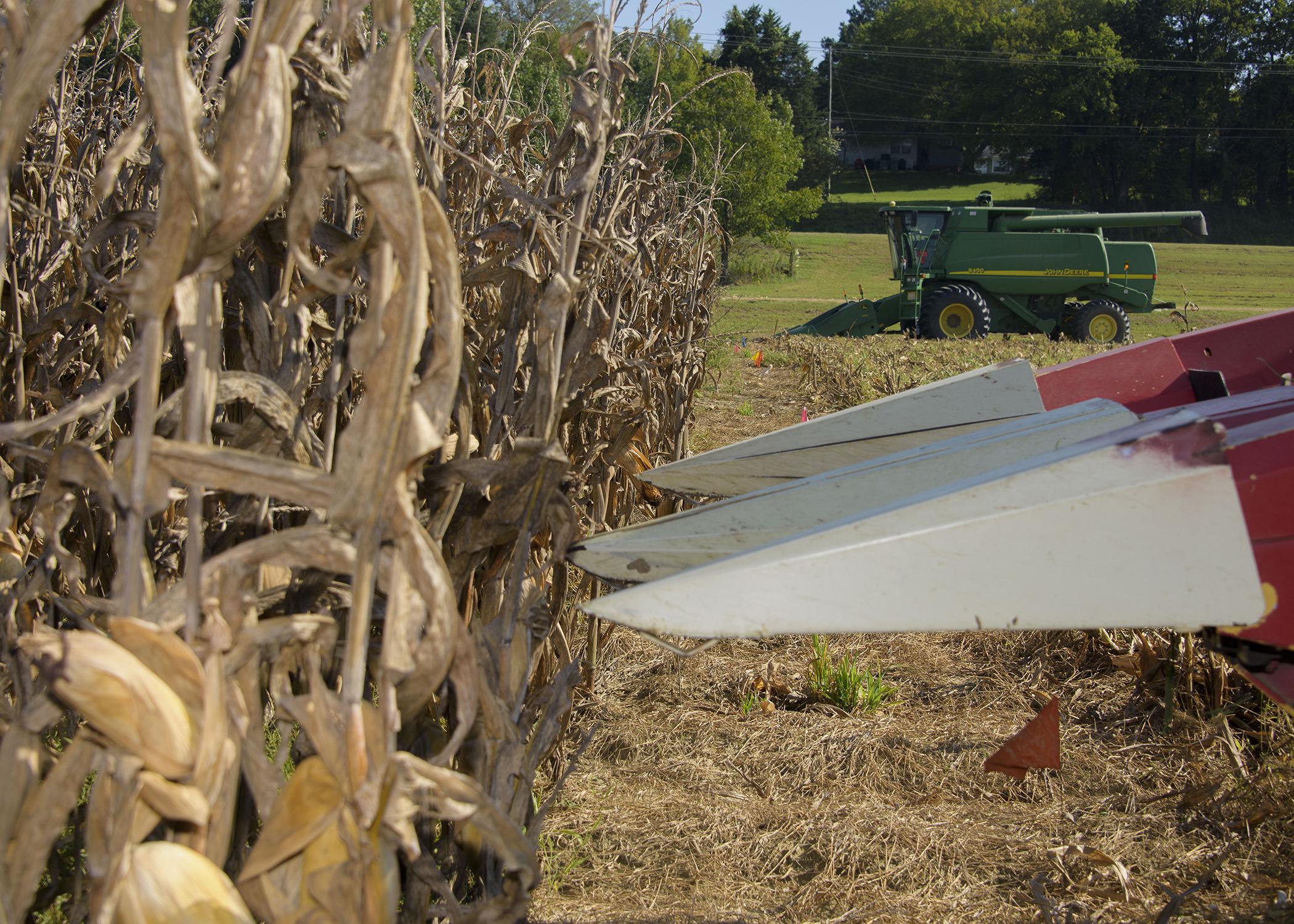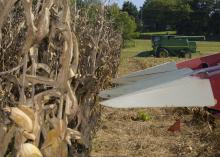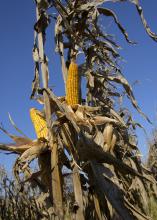Information Possibly Outdated
The information presented on this page was originally released on September 13, 2019. It may not be outdated, but please search our site for more current information. If you plan to quote or reference this information in a publication, please check with the Extension specialist or author before proceeding.
Corn looks good at harvest despite struggles in season
STARKVILLE, Miss. -- A difficult planting season followed by heavy rains and drainage issues challenged corn producers, but growers are still expected to produce a good crop despite these tough conditions.
The U.S. Department of Agriculture estimates the majority of the state’s corn crop to be in fair to good condition. Just 7% is considered excellent, while 12% is either poor or very poor.
Corn harvest is a bit behind schedule. Harvest was slow during August because of rainfall and a late-planted and later-maturing crop, but it has gone quickly in September.
As of Sept. 8, harvest of the crop was estimated at 55%. Hot, dry weather is drying corn rapidly in the field. If it continues, the majority of the crop should be harvested before the month is over.
Mississippi State University Extension Service grain agronomist Erick Larson gives a quick update of the Mississippi corn harvest.
Erick Larson, grain crops agronomist with the Mississippi State University Extension Service, said there have been few instances of lodged corn, or corn knocked over by weather.
“Significant rainfall and storms could delay harvest, increase harvest losses and greatly reduce efficiency,” Larson said.
He said he expects good, but not great yields across the state this year. Corn fields historically average yields of about 185 bushels an acre in Mississippi.
“Yields are generally ranging from about 125 bushels an acre to upwards of 250 bushels an acre, depending on drainage, soil texture, seedbed preparation and management,” Larson said. “The implementation of raised beds greatly improved stand establishment and relieved soil saturation, but soil compaction limited productivity noticeably where fields were prepared or planted when soils were a little moist.”
The problems were mostly caused by frequent, heavy rains during the growing season. Areas with poor drainage or heavy clay soils retain water longer, and those fields are producing significantly lower yields this year.
“We normally see a large difference between the yields on dryland and irrigated corn, but this year, the main differences are related to excessive rainfall during the growing season that had negative effects on crop productivity,” Larson said.
Spring rains pushed corn planting two to three weeks late in the state in 2019. When corn cannot be planted in the typical planting window, growers often switch to soybeans, but this year, the market outlook for corn was stronger compared to soybeans.
Will Maples, Extension agricultural economist, said the ongoing trade negotiations had a negative effect on soybean prices and made corn a relatively attractive crop this spring.
“Mississippi saw about a 35% increase in corn acreage planted this year as compared to last year,” he said.
Currently, cash bids for corn are about $3.35 to $3.46 per bushel, which is a little weaker than this time last year. December futures peaked at $4.68 on June 17, and futures were around $3.60 in mid-September.
Maples said weather has driven corn prices this year. The U.S. Corn Belt had a wet planting season; nationally, weather prevented farmers from planting 11 million acres in corn.
“The picture on what to expect with corn yields is still not totally clear and probably won’t be until after harvest is complete,” Maples said.









